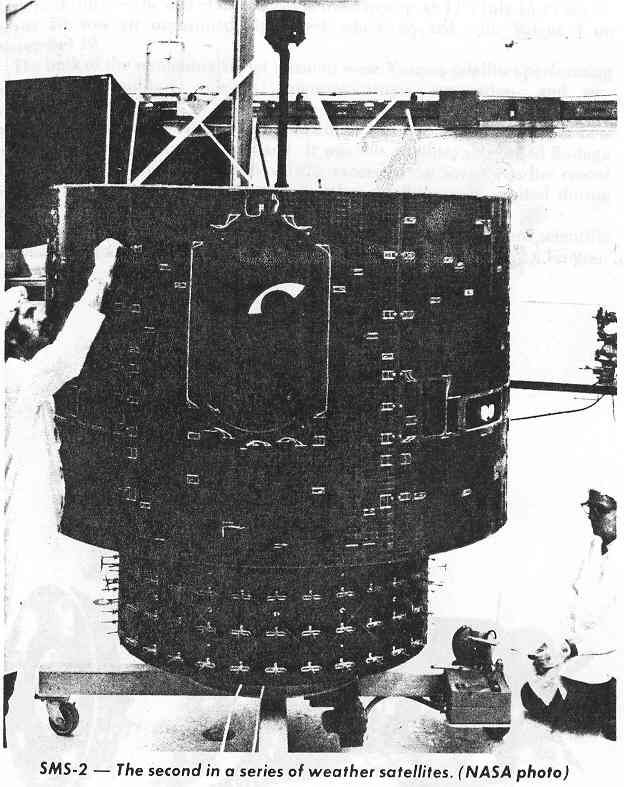On May 17, 1974, NASA launched the first Synchronous Meteorological Satellite, SMS-1. This was the first satellite designed to monitor meteorological conditions from a geostationary orbit. This kind of orbit allowed it to stay above a fixed location as Earth rotates.
One of the instruments on this spacecraft was a visible infrared spin-scan radiometer (VISSR), which provided high-quality cloud cover data 24 hours a day. It also carried a data collection and transmission system that allowed it to relay data from central weather facilities to smaller regional stations.
Another device known as a space environmental monitor measured the charged particles in Earth’s radiation belts and the solar wind.
The satellite was shaped like a cylinder and measured about 7.5 feet long, not including a 33-inch magnetometer that stuck out of one end. It launched from Cape Canaveral on a Delta rocket and remained operational for about 7 years. It was replaced by the National Oceanic and Atmospheric Administration’s new GOES satellite, which was almost identical.
Source: https://www.space.com/39251-on-this-day-in-space.html



